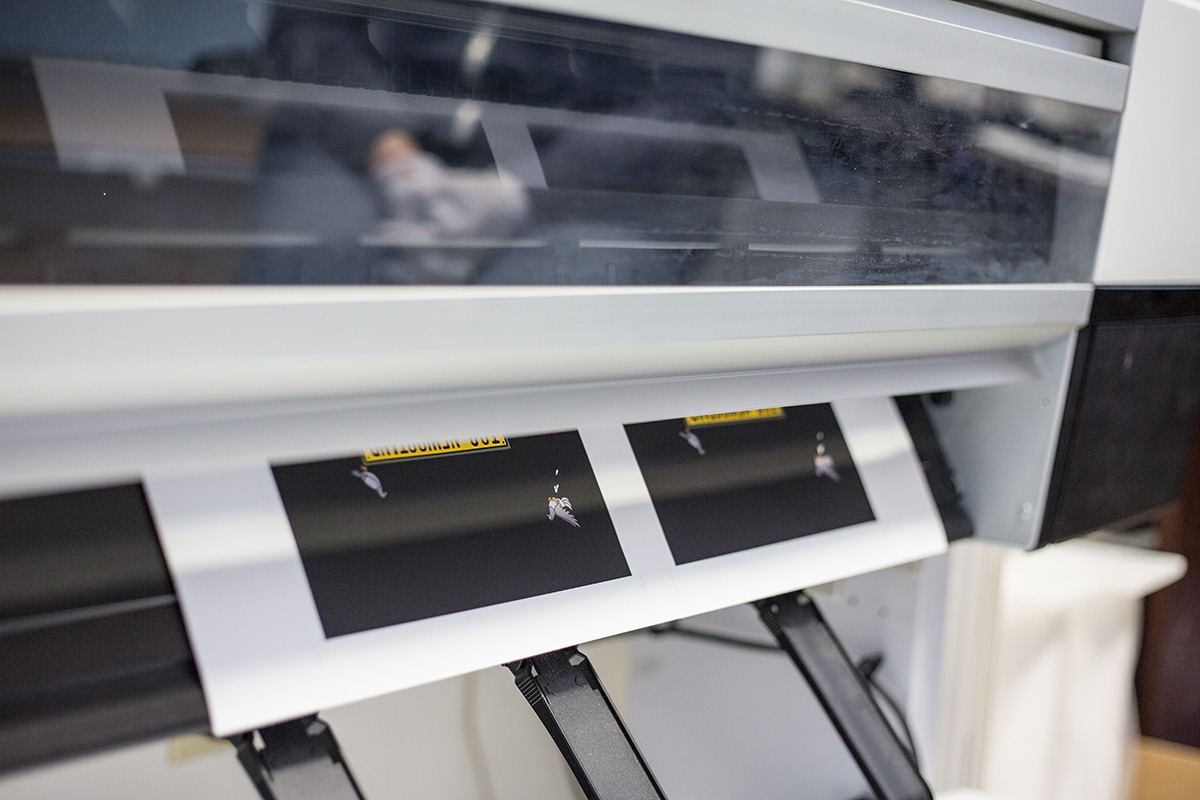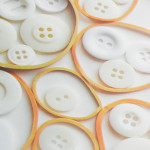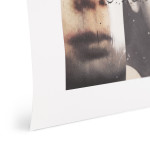
What you need to know about Giclée Printing
Your art deserves a color-accurate, tack-sharp print that will last a lifetime. Giclees are the go-to source for museum prints for a reason: Few other prints accurately reproduce drawings, paintings, photographs, prints and digital art. So many artists we talk with are confused by giclees: what makes them different than other art prints, what’s with all these weird terms and what the hell does giclee mean, anyway?
Technically, giclees are just ink jet prints. And, some unscrupulous vendors will just sell you any overpriced ink jet print and call it a day. What truly separates an inkjet print, like your home printer, from a giclee is the number and quality of the inks. Instead of a standard 4 dye-based inks (CMYK), giclee printers use 8-12 pigment-based inks (like traditional printmaking inks or fine art paint). This creates more vibrant colors and allow you to reproduce a larger color range (gamut).
We’re printmakers and craftsman, so we carry on the legacy of outstanding quality by using incredible people, people who are well versed in traditional methods to ensure each print is created with our high expectations of detail, color and saturation. Each print is hand cut to size and carefully packaged in acid-free and PH-balanced tissue paper.
Now you just need to pair up your artwork with the best paper stock. A complete glossary of terms follow, too.
EPSON LUSTER PREMIUM PHOTO PAPER
Epson Premium Luster Photo Paper stock features; 240 gsm, RC Paper Base, Highest Color Gamut, Luster “E” Surface Finish with a print permanence rating of 100 years.
Ideal For: Photography.
Brilliant, fully-saturated colors. Capable of rich, deep blacks and a satin-like gloss finish that resists harsh glare. Lifelike image crispness and a smooth coating with a very fine/subtle traditional RC photo paper texture. Archival prints with outstanding vibrance.
This stock will produce an image similar to a traditional photo print in a digital print.
SOMERSET MUSEUM RAG
Somerset Museum Rag Paper stock features; 300 gsm, 100% Cotton Paper, Mould Made, PH Neutral, Acid-Lignin and Chlorine Free with a print permanence rating of 150 years.
Ideal For: Replicating traditional printmaking, drawings, or watercolor paintings. Graphic Design and Digital Art Prints.
Outstanding color gamut and unparalleled color quality. Incredibly sharp detail. Blacks appear slightly lighter than the Epson paper due to the paper being uncoated but are still rich and deep. White paper with a slightly warm, life-like hue and minimal paper texture. Exceptional print permanence and lifespan.
LYVE CANVAS
Breathing Color Lyve Canvas stock features; 450 gsm, Poly-Cotton Blend, OBA Free, PH Neutral with a print permanence rating of 100 years. Comes with a protective gloss or matte finish.
Ideal For: Painting Replications, Digital Art (Paintings) or Landscape Photos.
Saturated colors and Deep blacks. Incredible finish with the matte or gloss coatings. The gloss coating offers a satin-like finish that reduces harsh glare in direct light while the matte replicates a smooth matte varnish finish of a traditional painting. The canvas texture emphasizes brushstrokes and other character in the image.
Caution: Be conscious of the canvas texture, text or very fine elements of detail may be distorted or skewed by the woven texture.
This stock replicates any image on a real textured canvas surface. Gloss and Matte coatings give the image an outstanding traditional-like finish.
All stocks are PH balanced and Acid free allowing outstanding color permanence and life spans of 100 years or more.
Lingo
GSM: Grams per square meter. The metric standard to measure paper weight. The higher the number, the heavier/thicker the paper. For reference, regular copy paper is usually around 80 GSM.
Luster: Typically mentioned in reference to the paper texture. Luster allows better handling qualities of the paper and glare diffusion when subjected to hard lighting.
Color Gamut: This refers to the range of colors that are represented or reproduced accurately within any given color space or printing method when the monitor or paper does not restrict the available hues of color.
Lignin: A material commonly found in plants to hold wood fibers together. While not acidic by nature, as the chemical bonds break down, this substance produces acid over time that can damage or yellow fine paper.
Mould-Made: A way of making paper similar to the old hand made methods. Paper manufactured this way does not have the the fibers aligned to one direction as many machine made papers do today, allowing the stock to be much more stable in a wet state, making it a popular paper choice with traditional printmakers.
OBA: Optical brightener additives are commonly used to make inkjet stocks (usually canvas) whiter. However, OBA has been proven to not age well, and, when exposed to bright light for even short periods of time, the additives will yellow.
Print Permanence: Permanence is typically measured in a laboratory setting by independent third parties to simulate lighting conditions of a typical indoor display. Most stocks stored in a cool dark place have lifespans much longer than the permanence rating.





